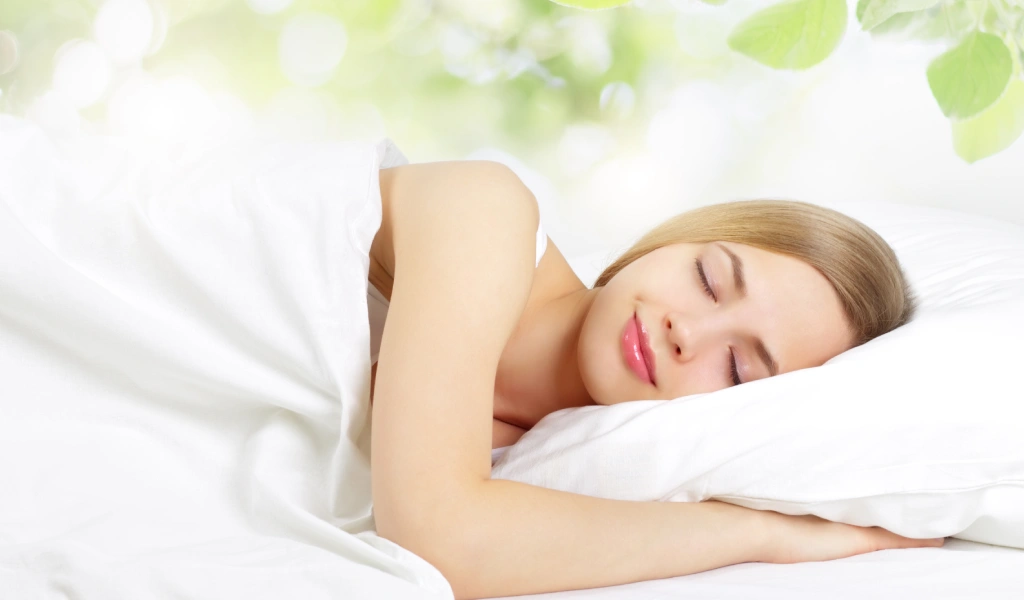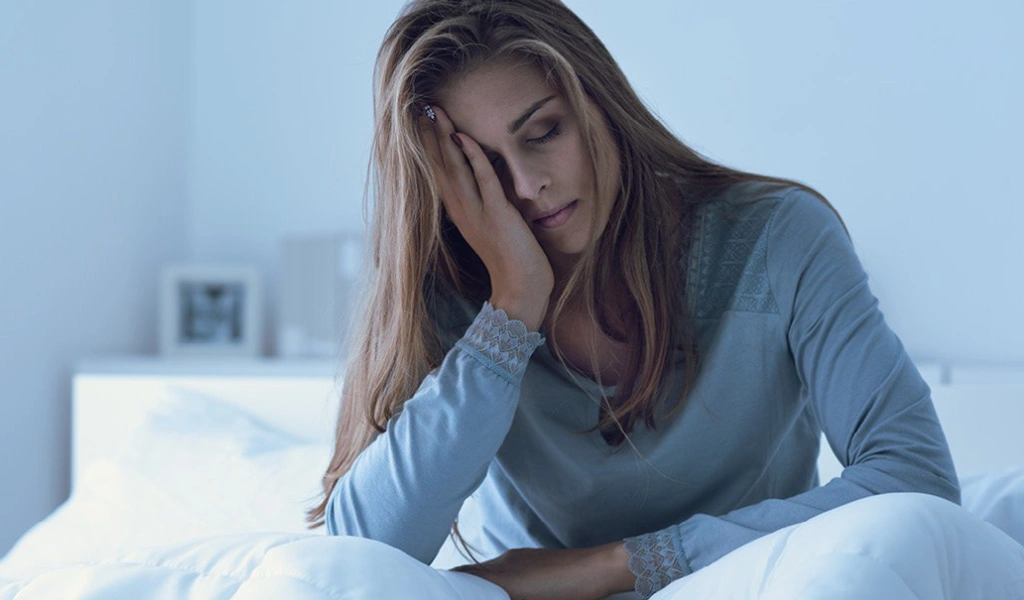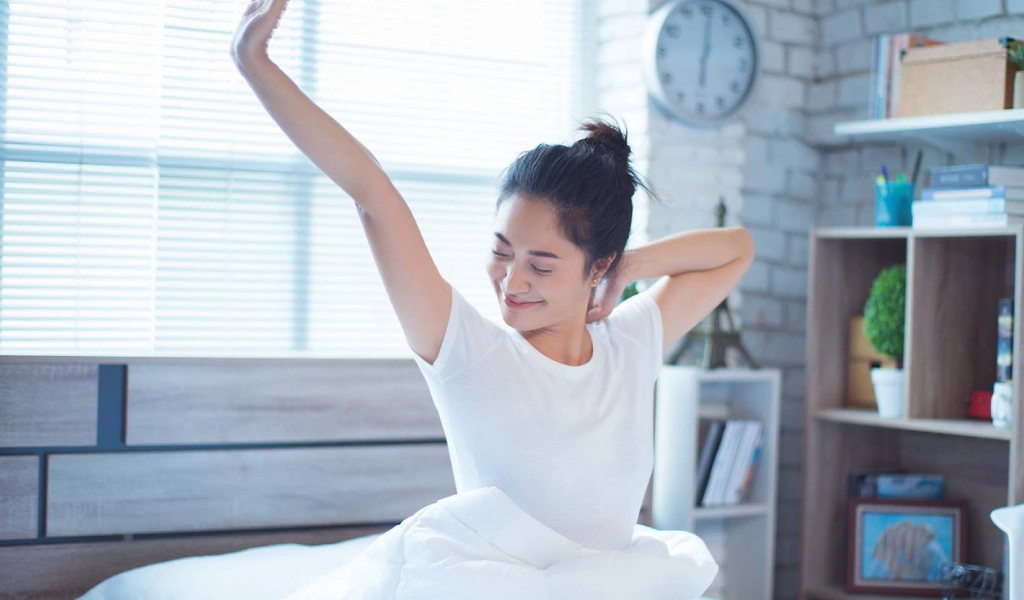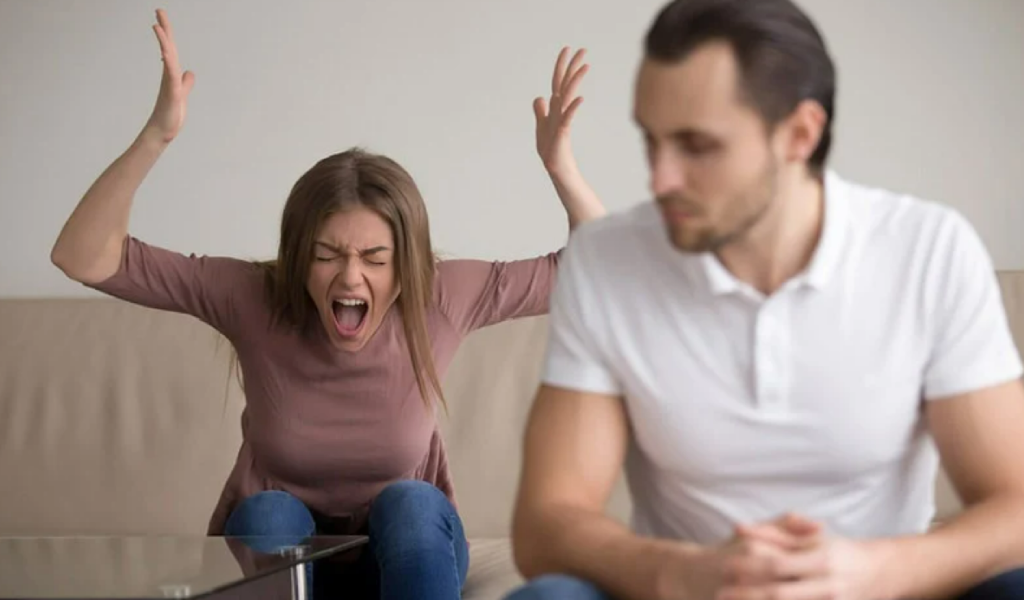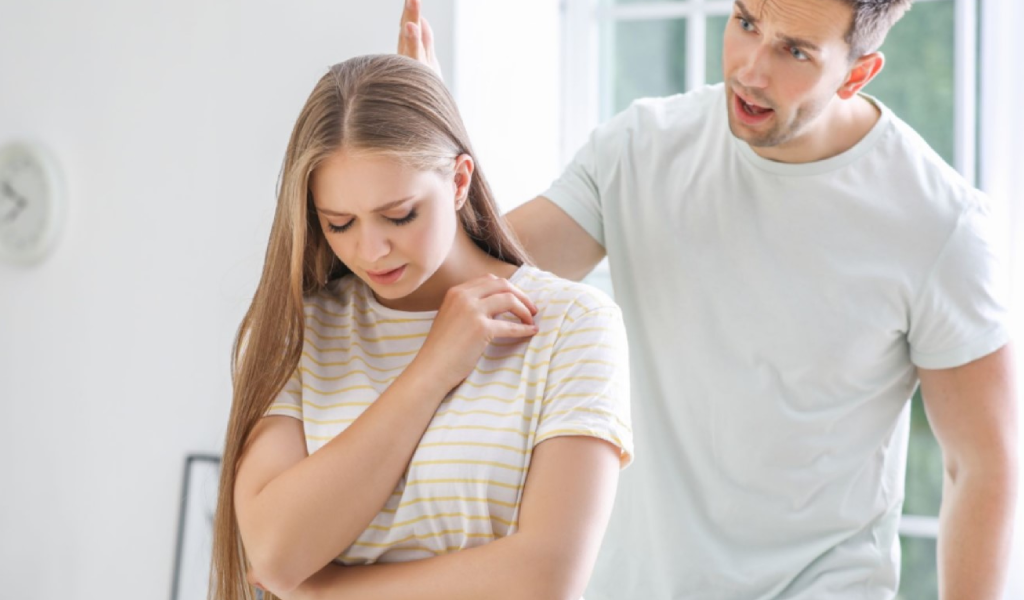Excessive snoring, particularly with excessive daytime drowsiness,1 could indicate obstructive sleep apnea,2 a significant sleep disorder. In this article ‘What is Sleep Apnea?‘ we will learn how to identify the symptoms and receive appropriate treatment for sleep apnea.
What is sleep apnea?
Sleep Apnea is a condition in which a person has brief pauses in breathing while sleeping.3 These pauses generally last 10 to 20 seconds and can happen 5 to 100 times per hour.
During a sleep apnea episode, the interruption of oxygen causes you to wake up suddenly, typically too quickly to recall. However, these disturbances in your regular sleep cycle result in an increased amount of time spent in light sleep and a decreased amount of deep, rejuvenating sleep necessary for alertness, mental acuity, and productivity the following day.
Sleep apnea has the potential to cause different health problems, some of which can be severe enough to be life-threatening, underscoring the importance of taking it seriously. If you or your partner suspects that sleep apnea may be present, it is vital to seek medical advice promptly.
Types of sleep apnea
- Obstructive sleep apnea (OSA) is the most prevalent form of sleep apnea and is the main topic of discussion in this post ‘What is Sleep Apnea?‘. It happens when the muscles that hold up the soft tissues in the upper airway relax during sleep, leading to a blockage in the usual airflow through the nose and mouth. This often results in audible snoring and periods of interrupted breathing.4
- Central sleep apnea, which is less common than other types of sleep apnea, impacts the central nervous system. One key characteristic is the interruption of brain signals to the respiratory muscles. Several medical conditions can lead to the onset of central sleep apnea. In contrast to other types of sleep apnea, individuals with central sleep apnea usually do not snore.
- Complex or mixed sleep apnea is an infrequent occurrence in which obstructive sleep apnea and central sleep apnea coexist.5
The intricate mechanisms involved in a sleep apnea episode
During a sleep apnea episode, there is a pause in breathing which leads to a drop in oxygen levels in the bloodstream. This leads the brain to briefly wake up to restore normal breathing, often causing gasping or choking noises.5
People with obstructive sleep apnea typically do not remember these nighttime awakenings, as they usually only partially awaken to adjust their throat muscles and clear the airway. Conversely, individuals with central sleep apnea may be conscious of their awakenings.
Indications and manifestations of sleep apnea
Identifying sleep apnea by yourself can be challenging as the main symptoms typically occur while you are sleeping.
One way to overcome this problem is to have a bed partner observe your sleep patterns or record yourself while you sleep. If there are pauses in your snoring and you experience choking or gasping after the pauses, these are significant signs of sleep apnea.
The main symptoms of sleep apnea are
- Regular, noisy snoring
- Struggling for breath, making loud noises, or gasping while asleep
- Feeling tired and sleepy during the day, regardless of the amount of time spent in bed.
Other symptoms of sleep apnea are
- Beginning the morning with a dry mouth or sore throat
- Waking up with a headache
- Finding it hard to sleep through the night, waking up often, or dealing with insomnia
- Feeling short of breath when waking up at night
- Having to go to the bathroom several times throughout the night
Is it sleep apnea or just snoring?
Not all individuals who snore necessarily suffer from sleep apnea, and likewise not all individuals with sleep apnea necessarily snore. Therefore, distinguishing between ordinary snoring and a severe case of sleep apnea can be challenging.
The most noticeable indicator is your daytime feelings. Regular snoring typically does not disrupt sleep quality as severely as sleep apnea does, so you are unlikely to experience intense exhaustion and drowsiness during the day.
The noises you make while snoring can also indicate potential issues. For example, if you are gasping, choking, or producing abnormal sounds, it may be a sign of sleep apnea.
It is important to remember that snoring can disrupt your bed partner’s sleep and impact your sleep quality, even if you do not have sleep apnea. However, there are techniques and remedies available to help reduce snoring.
Sleep apnea causes and risk factors
Sleep apnea has the potential to impact individuals from different walks of life, although specific factors may increase the likelihood of someone developing this disorder.
- Men have a higher likelihood of developing sleep apnea compared to women, with the risk increasing in women after menopause.6
- As individuals age, the likelihood of experiencing sleep apnea increases, with the condition being more common in older individuals. According to the Wisconsin Sleep Cohort study, the highest prevalence of sleep apnea is observed in individuals in their 50s and 60s before leveling off.
- Being obese greatly raises the chances of developing sleep apnea, with an even higher risk for individuals who are overweight.7
- Physical characteristics that may lead to sleep apnea are anatomical variances such as a small upper airway, a small or retruding jaw, an elongated soft palate, a high position of the tongue, a septum that is deviated, as well as enlarged tonsils and adenoids.
- According to research conducted by the University of Wisconsin’s Center for Tobacco Research and Intervention, smokers have a threefold increased risk of sleep apnea compared to nonsmokers.8
Allergies or other health problems that result in a stuffy nose and blockage may also play a role in the development of sleep apnea.
Central sleep apnea causes and risk factors
Central sleep apnea, like obstructive sleep apnea, is more common in men and people aged 65 and older. However, central sleep apnea is usually associated with serious conditions such as heart disease, stroke, neurological problems, or damage to the spinal cord or brainstem, unlike obstructive sleep apnea.
Individuals with obstructive sleep apnea can develop central sleep apnea while using positive airway pressure (PAP) devices for treatment.
Health consequences of sleep apnea
Continuous lack of sleep due to sleep apnea9 can lead to feeling drowsy during the day, tiredness, trouble focusing, memory problems, and a higher chance of making mistakes or having accidents in your day-to-day tasks.
Sleep apnea can affect mental health by changing mood, raising irritability, and causing feelings of anxiety and depression. It also heightens the chances of developing serious health problems like hypertension, heart disease, diabetes, atrial fibrillation, and stroke.
Getting your sleep apnea diagnosis
To determine if you have sleep apnea, it is necessary to consult a doctor with expertise in sleep medicine. The specialist will assess your symptoms, gather information about your medical background, and conduct a sleep study.
Sleep study options
A polysomnogram, also known as a sleep study, is considered the best method for diagnosing sleep apnea.10 This test is typically done in a hospital or sleep lab, where individuals are connected to sensors and monitored overnight or for two partial nights.
However, there is a growing trend of people being able to undergo testing at home using portable monitors that track heart rate, breathing, and blood oxygen levels during sleep.
Diagnosis
The diagnosis of sleep apnea depends on the frequency of breathing interruptions during sleep,11 which is determined through a sleep study, along with symptoms like snoring and excessive daytime tiredness. Sleep apnea is categorized as mild, moderate, or severe by the American Academy of Sleep Medicine depending on the frequency of pauses in breathing during sleep.
- Mild: 5 to 15 episodes of breathing per hour
- Moderate: Between 15 and 30 episodes of breathing per hour
- Severe: Over 30 episodes of breathing per hour
Being diagnosed with sleep apnea can be scary. The good news is that it is a treatable condition. Many people experience a significant improvement in their overall health, both mentally and physically, with proper treatment.
Sleep apnea treatment
If a person has mild sleep apnea, changes in their lifestyle12 may be sufficient to address the problem. Your doctor will determine if this is the appropriate initial step.
However, even if you are given a medical treatment, making the following adjustments can decrease the frequency of your sleep apnea episodes and enhance your sleep quality.
- Losing weight can greatly enhance your health if you are overweight. Although it may not cure the condition entirely, shedding pounds can reduce the occurrence of breathing problems, decrease blood pressure, and minimize fatigue during the day. Just a small reduction in weight can open up the airway and relieve symptoms of sleep apnea.13
- Participating in physical activity can be advantageous for people with sleep apnea, even if they do not lose weight. Working out can decrease the number of breathing interruptions during sleep and increase alertness and energy levels during the day. Aerobic exercises, weight training, and yoga are all effective choices for improving the muscles in the airways and improving breathing.14
- Choose to sleep on your side instead of your back to avoid worsening sleep apnea.15 Back sleeping can cause the jaw, tongue, and other tissues to block the airway, while stomach sleeping or twisting the head can also hinder breathing. Side sleeping is the best position to keep the airway open. If you struggle with side sleeping or tend to roll onto your back during sleep, using specialized pillows may be helpful.
- It is best to steer clear of alcohol, anti-anxiety drugs, and other sedatives before going to bed as they can relax the throat muscles and disrupt breathing. Examples of these substances include benzodiazepines like Xanax, Valium, Klonopin, and Ativan, antihistamines such as Benadryl and Claritin, opiates like morphine, codeine, Vicodin, and Percocet, and sleeping pills.
Other tips for treating sleep apnea
- Raise your head. Increase the height of your bed by four to six inches, or lift your upper body with a foam wedge or specialized cervical pillow. Utilizing the incline function of an adjustable bed can also be beneficial.
- At night, keep your nasal passages open by utilizing a nasal dilator, saline spray, breathing strips, or a nasal irrigation system, such as a neti pot.
- Stop smoking. Smoking can worsen sleep apnea by causing inflammation and fluid buildup in the throat and upper airway.
- Ensure that you do not consume caffeine or large meals in the two hours leading up to your bedtime.
Continuous positive airflow pressure (CPAP) therapy
Most individuals with sleep apnea, along with making lifestyle adjustments, will require treatment to keep their airways open while sleeping. The most successful treatment for mild to severe sleep apnea at present is continuous positive airway pressure (CPAP) therapy.16
What is a continuous positive airway pressure device and what are its mechanisms of action?
A CPAP machine is a medical apparatus designed to provide a constant flow of air through a snugly fitted nosepiece or mask via a hose while the individual is asleep. This consistent air pressure assists in maintaining an open airway and prevents interruptions in breathing.
Some individuals find it difficult to sleep while using a CPAP machine. However, with time, most individuals adapt and can sleep comfortably. Many people experience immediate symptom relief and a significant increase in mental and physical energy after starting CPAP therapy, making it worthwhile to give it a chance.
CPAP technology is continually advancing and enhancing, with the latest CPAP machines being lighter, quieter, and more comfortable than previous models. Therefore, even if you have previously dismissed them, it is worth reconsidering and trying them out again.
CPAP tips and troubleshooting
Adapting to sleeping with a CPAP machine may require some time. It is common to long for sleep without it, but there are steps you can take to ease the transition and maximize the benefits of the treatment.
Make sure your mask fits correctly
In CPAP therapy, not all masks are the same size. Having a mask that fits well and feels comfortable is crucial for effective treatment.
Various types of masks are on the market, some of which cover the entire face while others only cover the nose. These masks are available in various sizes to cater to different facial shapes. In addition, some options enable users to sleep in any position, wear glasses comfortably, and ensure the mask stays on even if the person moves around in bed.
Make sure to have a conversation with your doctor about the different choices available to you and make appointments for follow-ups to ensure that the mask fits correctly, assess the effectiveness of your treatment, and make any changes to the mask as needed.
Getting used to your CPAP device
Gradually adjust to using the CPAP device. Begin by using it for short intervals, such as half an hour or an hour, while sitting up in bed and engaging in activities like watching TV or reading. Once you feel comfortable with this, attempt using it while lying down or during naps.
Utilize the “ramp” feature. Many devices can be set to begin with a low air pressure which gradually increases. The aim is to fall asleep before the machine reaches the recommended pressure level. This is often found to make falling asleep more comfortable and easier for most individuals.
If you are woken up by airflow, reset the machine. To restart the ramp setting, turn the CPAP device on and off if you are woken up by a high-pressure stream of air.
Tips to improve health and comfort
- Opt for a CPAP machine equipped with an integrated humidifier: The majority of machines currently come with a built-in humidifier, which can assist in avoiding dryness and skin irritation that may arise.
- If you have a stuffy nose, you might find that a full-face mask is more comfortable than a nasal or nasal pillow mask: Make sure to regularly refill your humidifier, clean your tubing and mask, and check that the filter is not dirty. Using nasal sprays and antihistamines can also provide relief for nasal congestion.
- Make sure to keep your device free of dirt and germs: Regularly cleaning your CPAP hose, nosepiece mask, and humidifier tub is crucial to prevent infections and potential pneumonia.17 You will receive specific cleaning guidelines from your sleep specialist and the manufacturer of your device.
- To achieve the highest level of comfort: consult with your physician regarding the use of soft pads to minimize skin irritation, nasal pillows for alleviating nose discomfort, and chinstraps to help keep your mouth closed, reducing throat irritation and dry mouth.
- If you find the noise of the CPAP machine to be bothersome, you can try to cover up the sound. Many modern CPAP machines are designed to be quiet, but if the noise still bothers you, consider placing the device under the bed and using a white noise machine to dampen the sound.
Other positive airway pressure breathing devices
Other than CPAP, a sleep specialist may suggest alternative devices for treating sleep apnea.
- Single-use devices that provide expiratory positive airway pressure (EPAP) are designed to cover the nostrils and assist in keeping the airway unobstructed. These devices are smaller and less invasive compared to CPAP machines, making them suitable for individuals with mild to moderate obstructive sleep apnea.18
- Bilevel positive airway pressure (BiPAP or BPAP) machines are specifically made for individuals who find it difficult to use CPAP machines or for those with central sleep apnea who need assistance with weak breathing. These machines automatically adjust pressure levels while sleeping, increasing pressure during inhalation and decreasing it during exhalation. Some BiPAP machines can even deliver a breath automatically if they detect a period of no breathing.19
- ASV devices are successful in treating central and obstructive sleep apnea. They monitor your normal breathing patterns and regulate airflow pressure to ensure uninterrupted breathing while sleeping.
Oral appliance therapy
Customized oral appliances are becoming more commonly used to treat sleep apnea. Although not as successful as CPAP treatment, they are a viable alternative for those who are unable to handle using a CPAP machine, as many individuals find them to be more comfortable.
There are several types of oral appliances available for treating sleep apnea,20 with the majority being acrylic devices resembling athletic mouth guards or head and chin straps to reposition the lower jaw.
There are two commonly used oral devices known as the mandibular advancement device and the tongue retaining device. These devices work by moving either your lower jaw or tongue forward while you sleep to help open your airway.21
Due to the wide range of devices on the market, it may require some trial and error to identify the appliance that suits you best. It is crucial to be properly fitted by a dentist who is experienced in treating sleep apnea and to have regular check-ups with the dentist to address any issues and make necessary adjustments to the mouthpiece.
Oral appliances may cause certain side effects such as discomfort, excessive saliva production, and potential harm or lasting alteration in the alignment of the jaw, teeth, and mouth. These issues can be more severe in devices that do not fit properly.
Sleep apnea implants
A cutting-edge method for treating sleep apnea is the use of a pacemaker system that activates muscles to prevent airways from closing, allowing for normal breathing while asleep. This innovative treatment has received approval from the FDA in the United States for individuals suffering from moderate to severe obstructive sleep apnea.22
While the technology is still considered new and costly, research indicates that it could also be advantageous for individuals with central sleep apnea.
Upper airway surgery for sleep apnea
If you have tried all other sleep apnea treatments without success, surgery to widen your airway could be considered as an option.23
The doctor could potentially eliminate tonsils, adenoids, or additional tissue in the throat or nasal passages, alter the jaw to widen the upper airway or insert plastic rods in the soft palate. There are risks involved with surgery, including complications and infections, and occasionally symptoms may worsen following the procedure.
Sleep apnea in children
Recognizing obstructive sleep apnea in children can be challenging, as it is not always easily identifiable.24 Apart from persistent loud snoring, children with sleep apnea may:
- Hold your breath during sleep, snore, or make gasping sounds.
- Take on unusual sleeping postures.
- Experience bedwetting, excessive sweating during the night, or night terrors.
- Show signs of sleepiness during the day.
- Experience behavioral issues or a decrease in academic performance.
If you think your child may have sleep apnea, it is crucial to seek advice from a pediatrician who is an expert in sleep disorders. If left untreated, sleep apnea can impact your child’s cognitive abilities, emotional state, physical development, and overall well-being. The reasons behind and methods of treating sleep apnea in children are important considerations.
Enlarged tonsils and adenoids are the primary reasons for obstructive sleep apnea in children.25 Typically, a straightforward adenotonsillectomy can resolve the issue by removing these tissues. In some cases, the child’s healthcare provider might suggest using a CPAP or similar breathing apparatus.
Your support, encouragement, and healthy habits can help your overweight child overcome obstructive sleep apnea and attain a healthy weight, thereby promoting a healthier lifestyle for your family in the long run.


